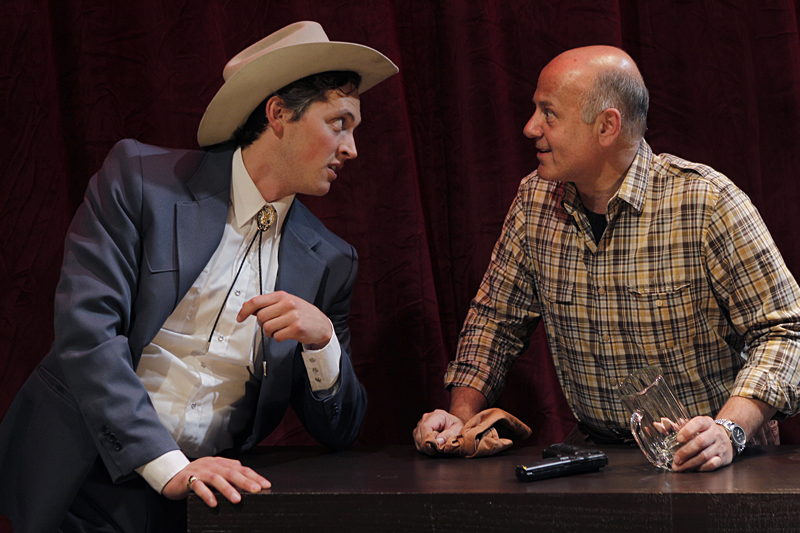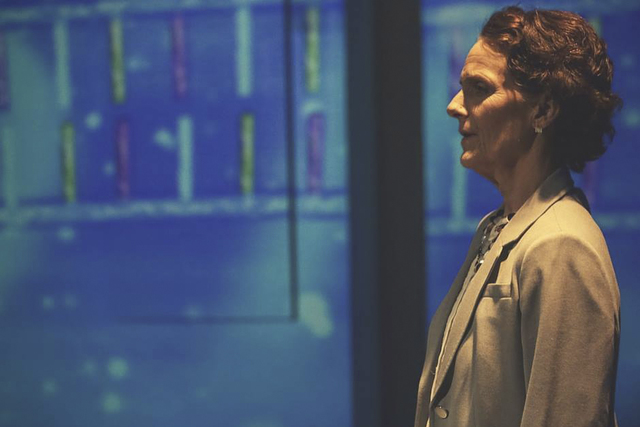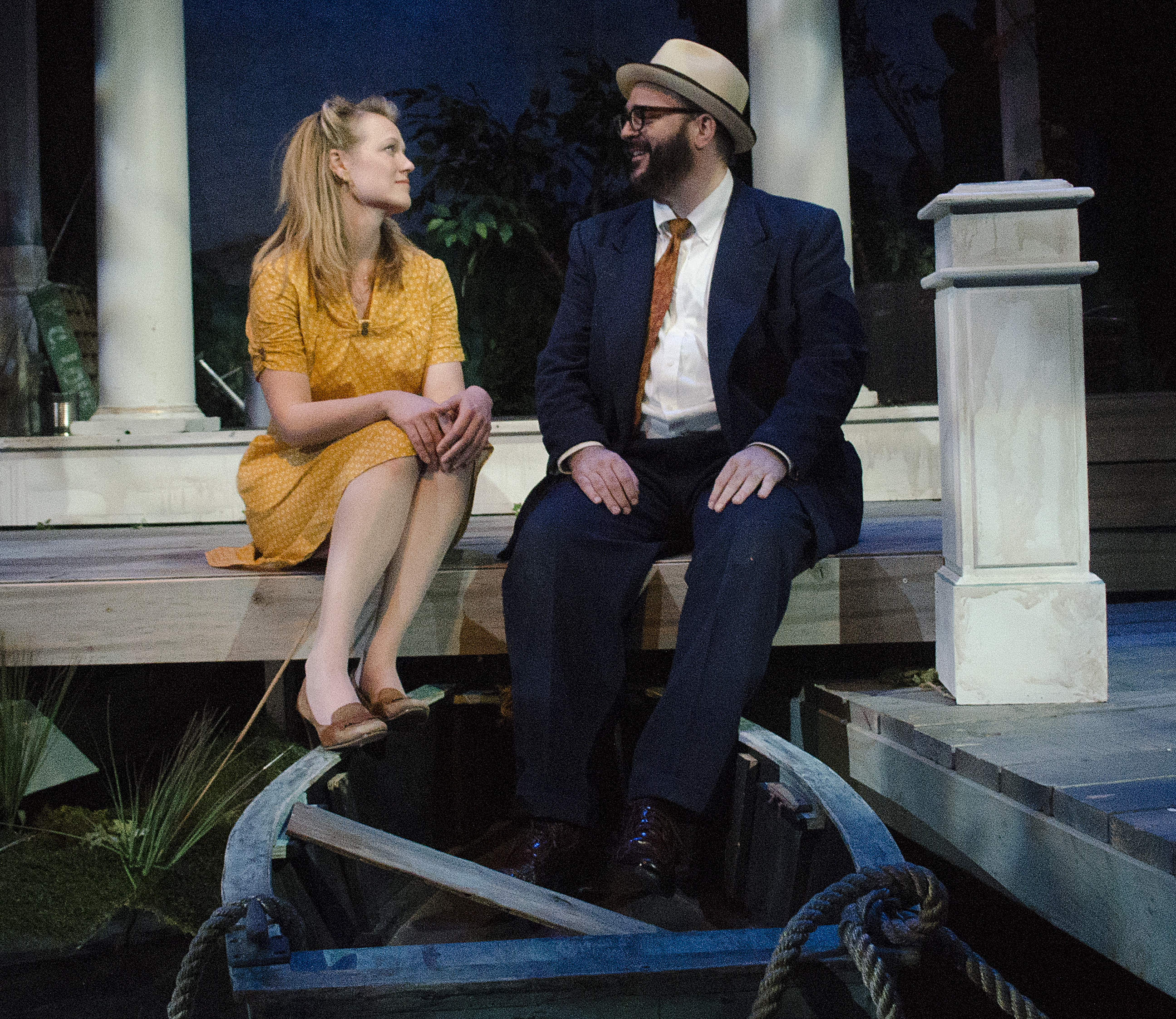Traveling back east this spring, whenever I mentioned living in Seattle, theater folk would ask in a funereal tone, “So how’s Intiman?” The 40-year-old theater’s closure last year, owing to overspending and lax board oversight, was a national story, covered in The New York Times. A year later, Bart Sher is safely ensconced at Lincoln Center; his hand-picked, short-lived successor, Kate Whoriskey, is also back in New York; and young Andrew Russell is now running the show. Aided by consultant Susan Trapnell, who saved ACT from a similar situation in 2003, his big gamble is the Intiman Theatre Festival—one new play and three old, performed by the same stock company. The stakes are high, since the fest depends on ticket sales, not subscribers. And if theatergoers don’t bite, the old World’s Fair building could become just another trinket shop at Seattle Center—perhaps an outlet mall for cracked Chihulys.
But having seen three of the four plays last week, I am here to tell you: Intiman is back! The patient is not only alive, but sentient, coherent, and engaging. Dirty Story and Romeo and Juliet I loved. Hedda Gabler felt tedious, but still has interesting aspects worth seeing. (Sorry, Dan Savage, but I didn’t have time for your Miracle!) The pleasure here is a company of artists working together intimately in several shows, so we get to enjoy their mastery in multiple roles. One night you have the absurdly talented Quinn Franzen as a fat American cowboy in Dirty Story; the next, he’s the lovelorn swain of Verona.
For Romeo and Hedda, designer Jennifer Zeyl transforms the mainstage into utterly distinct universes. The action is thrust into the foreground in Romeo, emphasizing the overpopulated, favela-like world director Allison Narver conceives for Shakespeare’s tragic love story. The cast is hemmed by a claustrophobic backdrop of corrugated metal stall-fronts. Every element of Narver’s interpretation serves that hyper-fertile world—from animalistic, Mardi Gras-like masked revels to interchangeably partisan photo memorials of the dead (whose images are likewise echoed as emblems on costumer Deb Trout’s gangsta whites). Come back later, and the set becomes a deep, vacuous dream-space for Hedda, hung with brass chandeliers and gossamer curtains, conjuring a vision of beauty in ruin.
The two plays’ emotional worlds are just as different. Where Romeo‘s teeming cauldron of life squashes characters into urgent situations that plausibly reflect an urbanizing planet, the static vacancy of Hedda‘s Norwegian mansion dissipates any humanity inside it, no matter what Ibsen wrote. Director Russell forces his players into urgency, which can be strident and hollow. To represent the bourgeoisie’s spiritual bankruptcy, he offers an aptly superficial style (e.g., Erik Andor’s trendy high-fashion outfits), but that’s a quick, easy point to score. Only Hedda (Marya Sea Kaminski) is exempt from the sartorial slavery that binds the others, and she wears odd outfits—like high green platform shoes with grape tights—that presage her departure from society. Kaminski boldly externalizes Hedda’s brewing revolution. We watch her become physically possessed by demonic forces—fingering the furniture near the outset and finally performing an anguished interpretive dance. Still, this Hedda drags and leaves you feeling hungry. It lacks the current relevance Narver has found for her Romeo.
It’s fun to watch Kaminski morph from Hedda‘s vicious vixen to Juliet’s nurse, a role that showcases her knack for no-holds-barred comedy. Splay-footed, black-toothed, hunched and saucy, she conveys heaps of character in such quick gestures as kissing her own fingers then pawing the air, as though finger-painting her love on Juliet. It’s gross, hilarious, and authentic. Über-talented Michael Place also straddles the two plays, but whereas his astonishing Mercutio dazzles like a firefly on speed, barely burdened by a body as he scales poles, prances, flits, and cavorts through the Queen Mab speech, his dissolute genius Lovborg in Hedda is unremarkably solid. One of the treats of repertory is seeing the same actors raise and lower their respective talents to fit the roles of the moment. Unfortunately Fawn Ledesma’s Juliet is as shallow as her ingénue in Hedda, but thespian polymath Franzen’s Romeo easily picks up the slack.
John Patrick Shanley’s 2003 political comedy Dirty Story needs less doctoring to be contemporary, so director Valerie Curtis-Newton hews closely to the ingenious original script. I shouldn’t say too much about what it’s about, because it’s so scrumptious to discover en route. (Suffice it to say that not one detail is random, however absurd each scene’s setup may initially seem.) As the couple from geopolitical Hell, Brutus and Wanda (Shawn Law and Carol Roscoe) convey all the right nuances: He bitter, impotent, and dangerous; she sycophantic, neurotic, and tyrannical. Zeyl cages Brutus in a bare-studs apartment that becomes ever more cramped. Amplifying the razor-sharp allegory are Franzen and Allen Fitzpatrick as American and British caricatures, respectively; each has a stake in the domestic quarrel, for reasons gradually guessed. This two-act is so hilarious, I’m going back to see it again.
Is the festival flawless? No. To its credit, it takes risks, albeit smarter ones than Intiman did in its 2010–11 season. (Then, the success of Ruined and A Doctor in Spite of Himself was offset by the uninspired flops The Thin Place and The Scarlet Letter.) Most of the current risks pay off. As for those that don’t, they fail in mostly interesting ways—which is what we ask of theater. If enough tickets are sold this summer, another festival is planned for 2013. Whether Intiman will return to a traditional season is unknown.
Does Seattle need three full-season theater companies? Can they be supported? Unlike 1972, when Margaret Booker founded her itinerant company, and unlike 1987, when it finally found a home at Seattle Center, Intiman isn’t competing with only the Rep and ACT. Today there’s the Internet, cable, video games, and a thousand other excuses not to leave home. In which sense, the festival’s pay-as-you-go, flat-fee scheme is a necessary wake-up. It’s a move away from the traditional subscriber model—which, like a gym membership, puts the same price on fitness and couch potato-dom. Whether you go or not, the gym/theater just keeps billing your credit card. Intiman is now asking you to exercise your theater-going muscles more directly. Those who like a challenge may respond to the first rep by adding a second, third, or even fourth during the festival. Afterward, a leaner theater and a more intellectually buff audience are likely to result from this summer’s crash diet.








